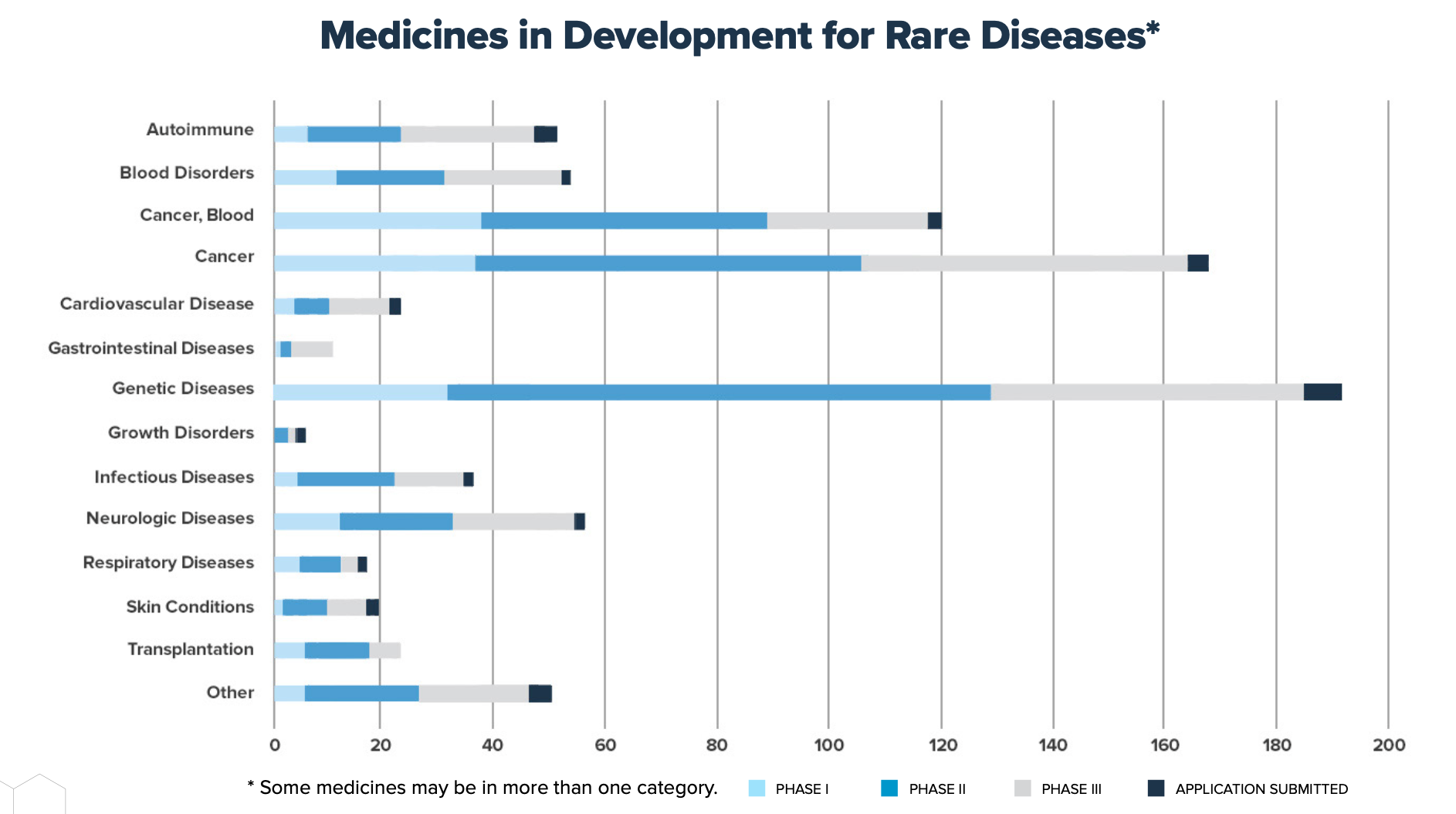Today, PhRMA released a new report detailing orphan drug development in the U.S. and the potential to meet the significant unmet medical need for patients. Rare diseases and conditions individually affect small patient populations, but collectively they impact approximately 400 million patients around the world. America’s biopharmaceutical research companies have spent decades working to tackle these extremely challenging diseases, of which researchers have identified approximately 8,000. In the United States alone, roughly 30 million Americans are living with a rare disease.
The U.S. Food and Drug Administration (FDA) defines a rare disease as one affecting fewer than 200,000 people. Most of these diseases are caused by genetic mutations and about half of all rare diseases impact children. There are unique challenges associated with developing medicines to treat rare diseases, also known as “orphan drugs”, which can make bringing new medicines to patients particularly difficult. Challenges include gaps in scientific knowledge about specific rare diseases and the complexities in drug development for rare diseases.
Today, there is hope on the horizon as scientists are uncovering more about rare diseases at the molecular and genetic levels, which is driving the development of innovative treatments for rare diseases. The 791 potential medicines currently in development, all of which are in clinical trials or awaiting review by the FDA, include:
168 for rare cancers and 120 for rare blood cancers, which together account for 35% of the 791 rare disease medicines in development.
192 for genetic disorders, including cystic fibrosis and spinal muscular atrophy (SMA).
56 for neurological disorders, including amyotrophic lateral sclerosis (ALS) and seizures.
54 for blood disorders, including sickle cell disease and hemophilia.
51 for autoimmune diseases, including systemic sclerosis and juvenile arthritis.
36 for infectious diseases, including rare bacterial infections and hepatitis.
Other examples of medicines in development to treat rare diseases include those intended to treat patients living with type 1 diabetes with residual beta cell function, mastocytosis, a rare condition caused by too many mast cells in the body’s tissues, Cushing's syndrome, a condition caused by too much exposure to cortisol, polycystic ovary syndrome, a rare hormonal condition, amyloidosis, a condition where amyloid proteins build-up in the body’s organs, graft versus host disease and acute radiation syndrome, among others.

Despite a challenging R&D landscape, biopharmaceutical researchers have leveraged new technologies and the growing scientific understanding of many rare diseases, to develop groundbreaking therapies including gene therapies that are able to target the underlying genetic basis of some rare diseases.
In 2020 alone, more than half (55%) of novel new drug and biological approvals were orphan drugs for rare diseases. Orphan drug approvals that year included medicines targeting von Hippel-Landau disease, a genetic disease that causes tumors and/or cysts to grow in different parts of the body and affects 10,000 people in the U.S.; to reduce the risk of molybdenum cofactor deficiency type A, a genetic disease characterized by brain dysfunction and severe development delays in children and affects 1 in 200,000 births worldwide; and plasminogen deficiency type 1, a rare disease causing inflamed growths on mucous membranes affecting about 1.6 people per 1 million worldwide.
Underpinning this marked progress are key policies that have helped accelerate the development and availability of new medicines. The incentives included in the Orphan Drug Act (ODA) have been a driving force in increasing rare disease R&D over time. The ODA has been regarded as a tremendous success, and since its enactment in 1983, the FDA has approved more than 600 medicines for rare diseases, in contrast to fewer than 10 medicines for rare diseases in the decade prior to its enactment.
Despite the tremendous progress in the development of medicines to treat rare diseases over the past 30 years, still less than 10% of rare disease have an FDA-approved treatment option due to scientific, logistical and other challenges. The medicines in development today represent the continued commitment of biopharmaceutical companies to overcome the challenges inherent in developing medicines for rare diseases and meet the unmet needs for patients and their families.
To read more about the rare disease medicines in development, click here.




